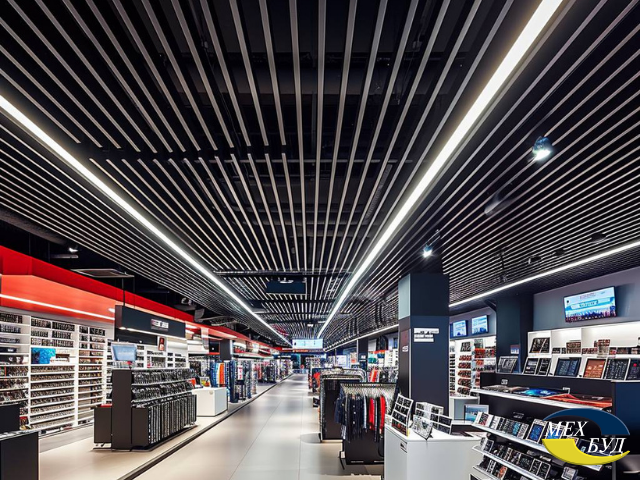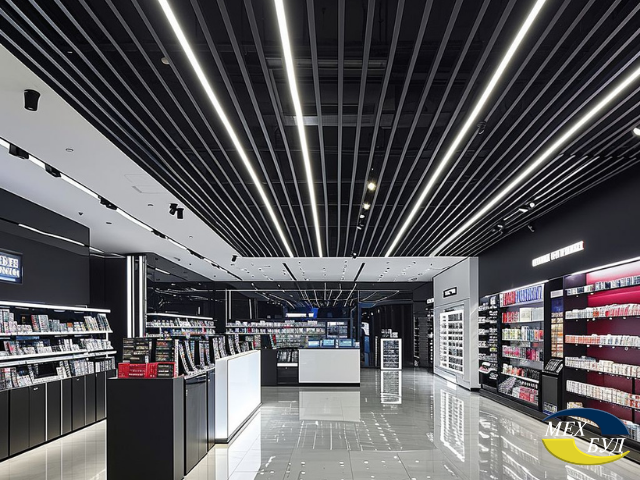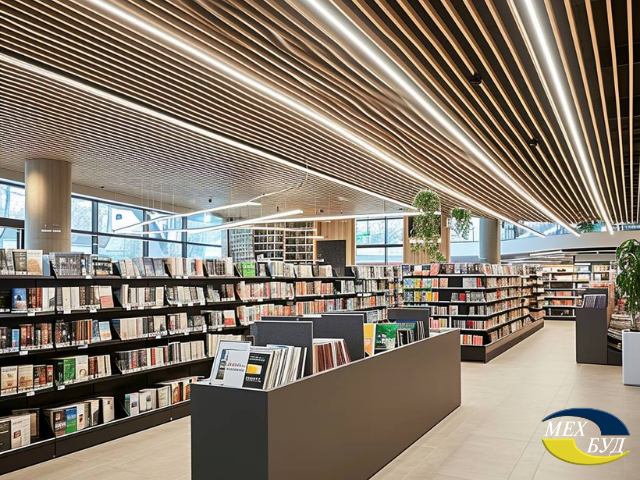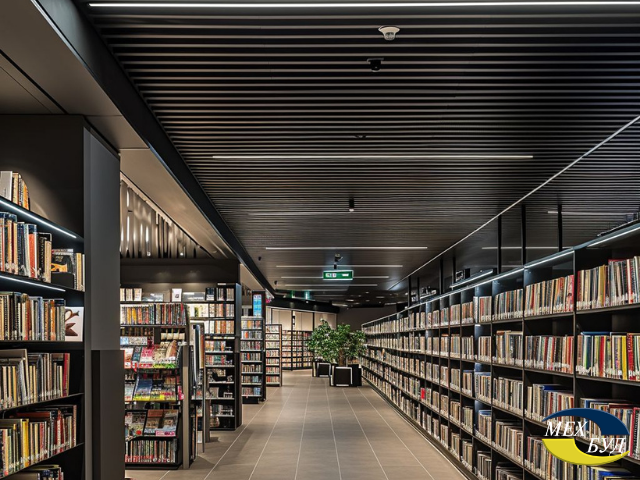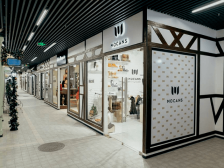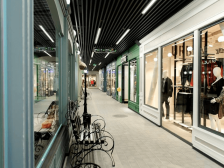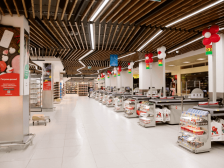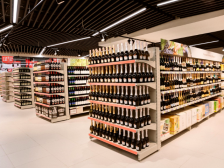Rack Ceiling
This ceiling option involves the use of various-width (150-500 mm) and length (1.0-6.0 m) racks. The variability in color and orientation in the ceiling space allows for creating an original pattern and emphasizing the uniqueness of the design.
In areas of a store where products with strong odors (smoked meats, fish, etc.) are sold, the use of a rack perforated ceiling can be a smart choice.
This type of metal suspended ceiling, manufactured by “Mehbud,” promotes the rapid removal of foreign odors, improved ventilation, and the maintenance of fresh air in the room.
Perforated metal suspended ceilings:
- Facilitate accelerated air circulation.
- Improve the microclimate in the room, reducing the concentration of harmful substances and the likelihood of harmful microorganisms.
- Different types of perforation in corridor ceilings also enhance the room’s sound-absorbing properties.
All of these factors are essential to consider when planning the ceiling finish in storage areas for food products, including refrigerated rooms.
For small rooms with a width of up to 3 meters, using a suspended metal corridor rack ceiling is very convenient. Features of this type of ceiling include:
- The racks for this type of ceiling are also made of galvanized steel or aluminum, with a thickness of up to 1.0 mm.
- The mounting system is very simple – panels are laid on brackets fixed along the walls, making installation quick.
- This type of ceiling can visually expand the space, especially when mirrored racks are used.
- Different types of perforation in corridor ceilings also enhance the room’s sound-absorbing properties.

